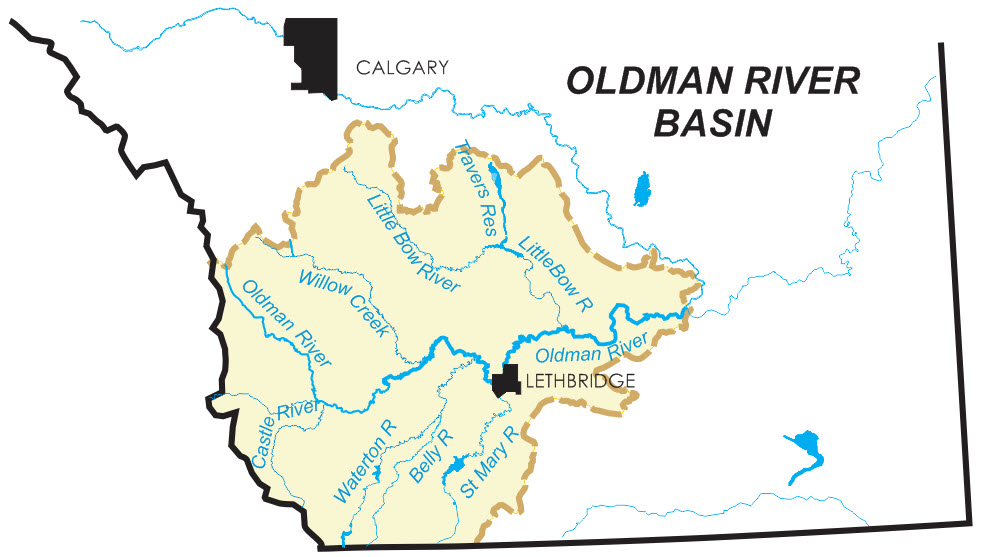Who is the Oldman Watershed Council?
The Oldman Watershed Council (OWC) is a not-for-profit organization of southern Albertans that are committed to improving the health of the Oldman Watershed through knowledge sharing, building and strengthening stakeholder partnerships, stewardship promotion, and implementing integrated land and watershed management plans. The OWC is one of 11 Watershed Advisory and Planning Councils (WPACs) in Alberta. WPACs provide independent voices for watershed management and health under the Province’s Water for Life Strategy.
http://aep.alberta.ca/water/programs-and-services/water-for-life/default.aspx
Where is the Oldman Watershed?

This watershed is part of the South Saskatchewan River Basin, which also includes the Bow, Red Deer and South Saskatchewan River watersheds. The Oldman Watershed is in southwestern Alberta, extends north to High River, east to Grassy Lake, west to the Crowsnest Pass in the Rocky Mountains, and dips south across the 49th parallel into Glacier International Peace Park in Montana. Unlike many other basins, the Oldman watershed is located in a semi-arid ecosystem that is highly dependent on its snow-fed headwaters for sustained continuous river flows. The main tributaries of the Oldman River include the Livingstone, Crowsnest, Little Bow, Castle, Waterton, Belly and St. Mary’s Rivers, which in turn are supplied upstream by numerous small streams, springs and wetlands. The Oldman River joins the South Saskatchewan River upstream from Medicine Hat.
What are the goals of the OWC?
Based on the State of the Watershed report and the Integrated Watershed Management Planning process, 8 priority goals were identified:
Goal 1: Improve the understanding and strengthen the commitment of residents to the health of the Oldman watershed.
Goal 2: Optimize the availability of water for the natural ecosystem while supporting the social and economic needs of the community.
Goal 3: Manage and protect the integrity of headwaters and source waters.
Goal 4: Identify and prioritize thresholds to manage threats and impacts on terrestrial and aquatic habitat.
Goal 5: Understand groundwater and how it interacts with surface water.
Goal 6: Identify water quality outcomes and assess factors impacting them for adaptive watershed management.
Goal 7: Prevent and control invasive species.
Goal 8: Understand the status and implications of emerging contaminants.
How can you get involved?
Citizens, communities, industry and government share responsibility for watershed management and health and by working together we can protect and improve the Oldman Watershed. You can get involved in a number of ways including: donate to the OWC, volunteer time on stewardship projects and initiatives, join the OWC membership, become a watershed steward, and/or sign the Southern Alberta Water Charter.

To find out more visit the Oldman Watershed Council web site at: www.oldmanwatershed.ca
For further information on the OWC, contact Shannon Frank at 403-382-4239
or E-mail: shannon@oldmanwatershed.ca |